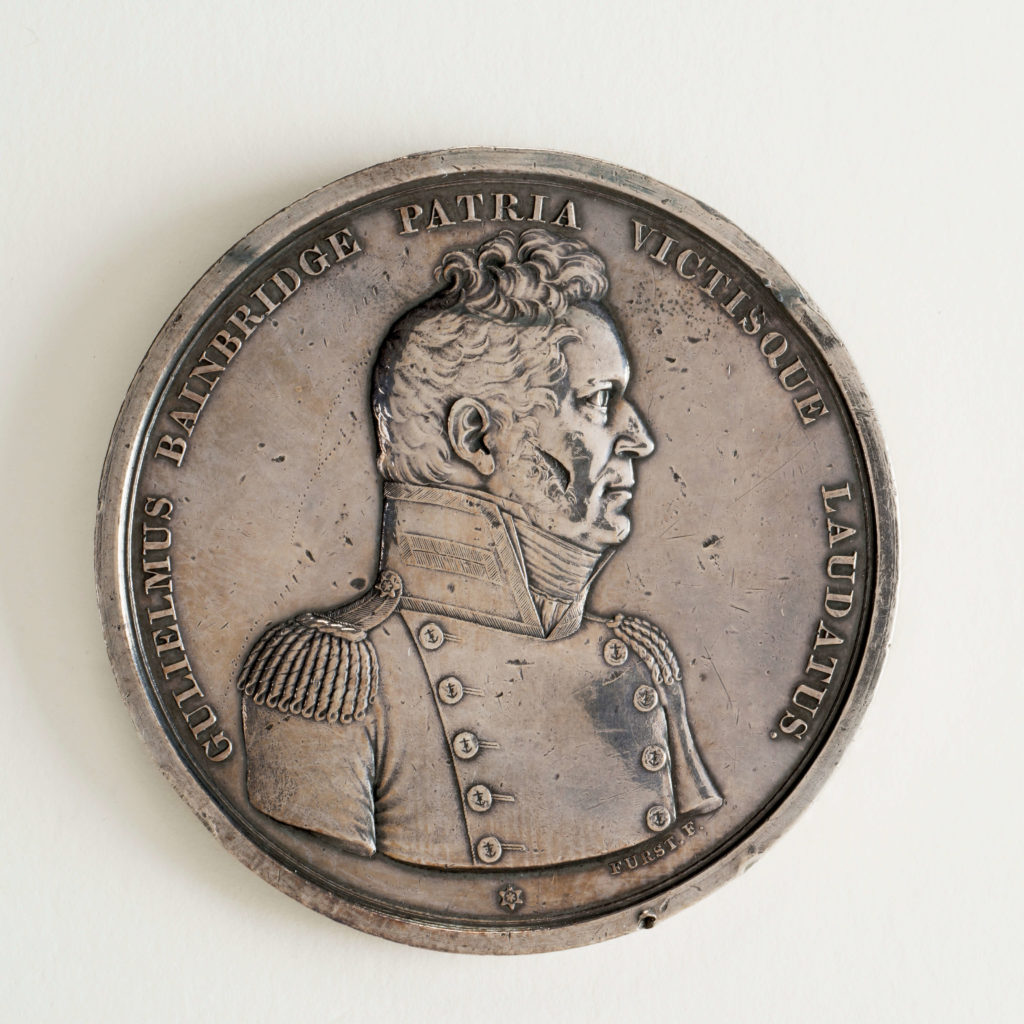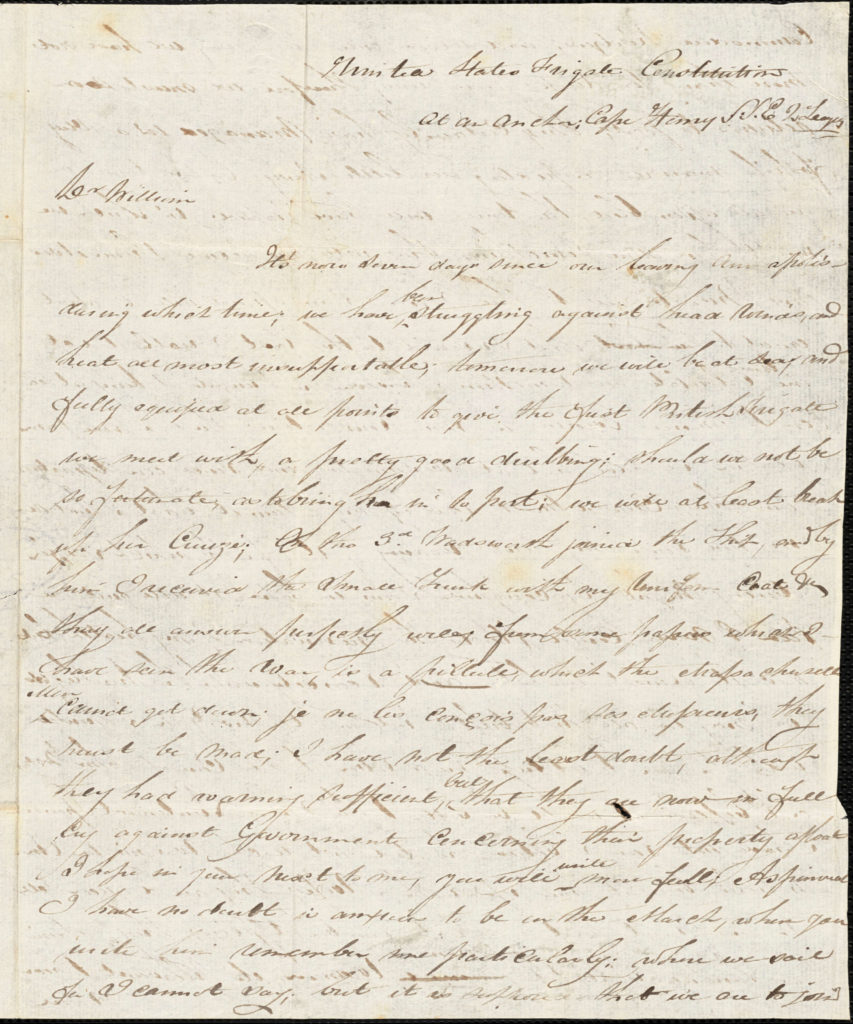Ship's Crew
John Cushing Aylwin
Rank(s): Sailing Master
Dates of Service: 5/25/1812 - 1/29/1813
Birth Date: 6/14/1778
Death Date: 1/29/1813
Early Life
John Cushing Aylwin was born in Quebec, Canada, on June 14, 1778, to Lucy Cushing and Thomas Aylwin. His father was a Boston merchant who had fled to Canada during the American Revolution.
Early Experience
His father sent him to be an apprentice to a captain in London with the condition that Aylwin attend a naval academy for six months. Aylwin never made it to school, but through shipboard experience, he was eventually promoted to the position of mate. He was pressed into service in the British Royal Navy, and sailed aboard a brig of war for several years. Aylwin had been determined to migrate to the United States, and ill health allowed him to be released to Boston, where he joined a merchant ship.
Aylwin entered the U.S. Navy as a sailing master on May 25, 1812. He was quickly promoted to fifth lieutenant in recognition of his skills in September of that same year. As the sailing master, Aylwin was responsible for the safe navigation and proper sailing of the ship at all times. As fifth lieutenant, he was also responsible for the maintenance of the equipment and control of the guns on the forecastle.
The sailing master was responsible for the day to day running of the ship. He had to be an excellent seaman and navigator, and be well-versed at working and maintaining a vessel at sea. He oversaw the loading and stowing of ballast, provisions, and other cargo. Navigation was his direct responsibility, and he was in charge of keeping the logbook and charts. In addition to the ship’s logbook he was to keep a journal in which he noted navigational challenges or dangers not marked on charts, inventories of stores and provisions brought aboard and used. Finally, he was responsible for keeping the ship in good sailing trim. The master’s mates, boatswain, and carpenter reported to the sailing master. He was paid $40.00 per month and was allowed two rations per day.
The junior lieutenants each had command of a watch. The men in the watch were under the lieutenant’s care and command. He was to keep a list of all the officers and men in his watch. When mustered, he examined the men to make sure they were well clothed, clean, and sober. He regularly visited the lower decks to make sure the sentries were at their posts, that no tobacco was smoked between decks, and that there were no unenclosed candles lit. While at sea, a junior lieutenant was not to change the ship’s course without the captain’s permission, unless it was to prevent a collision or other accident. In battle, the lieutenants were stationed with their divisions on the spar deck or gun deck. The youngest lieutenant exercised the men with small arms and in battle oversaw their use. In addition, all lieutenants were required to keep a journal or log, a copy of which was to be delivered to the Navy Office at the end of a voyage.
Battles and Engagements
Aylwin was wounded in the battle with HMS Guerriere and survived. He was later mortally wounded with a shot in the right shoulder during the engagement with HMS Java. He was awarded a portion of the prize money for both battles. He was also awarded two Congressional silver medals.
Aylwin died on January 29, 1813, from complications from the wounds he received during the battle with HMS Java. He is quoted as remarking on his deathbed, “…Doctor, I have looked death too often in the face to be afraid of him now…” He was later commemorated for his service by the naming of four U.S. Navy ships: a galley in 1813, a destroyer in 1914, a Farragut-class destroyer in 1934, and a destroyer escort in 1971.
Crew ID
413

